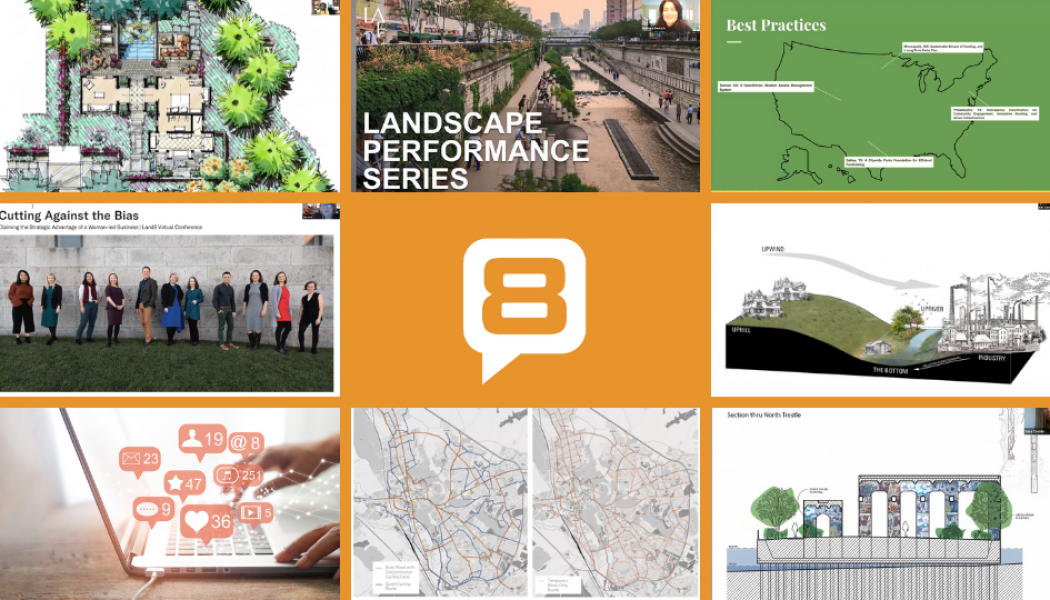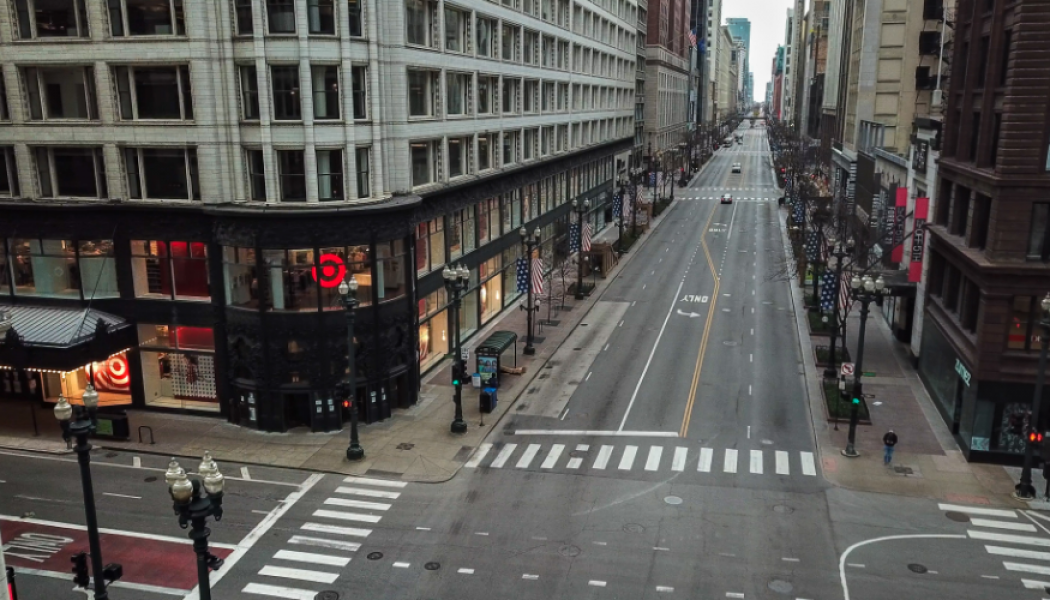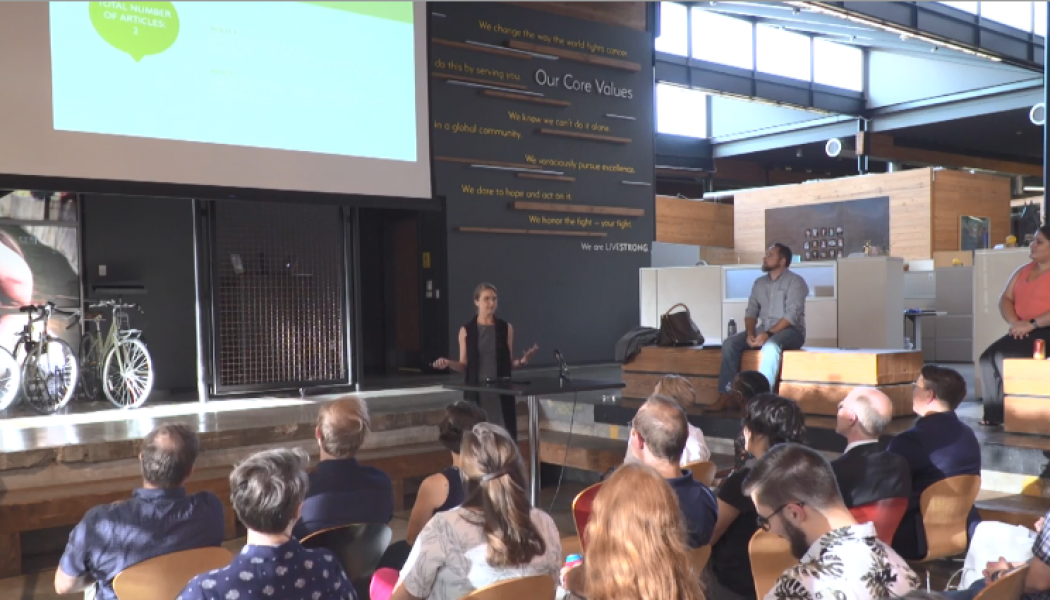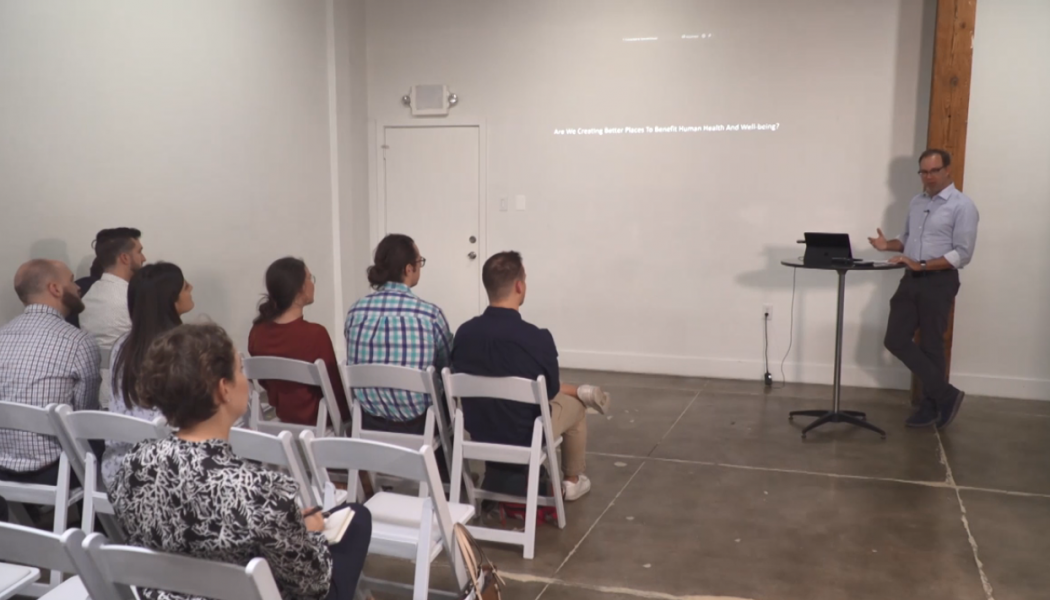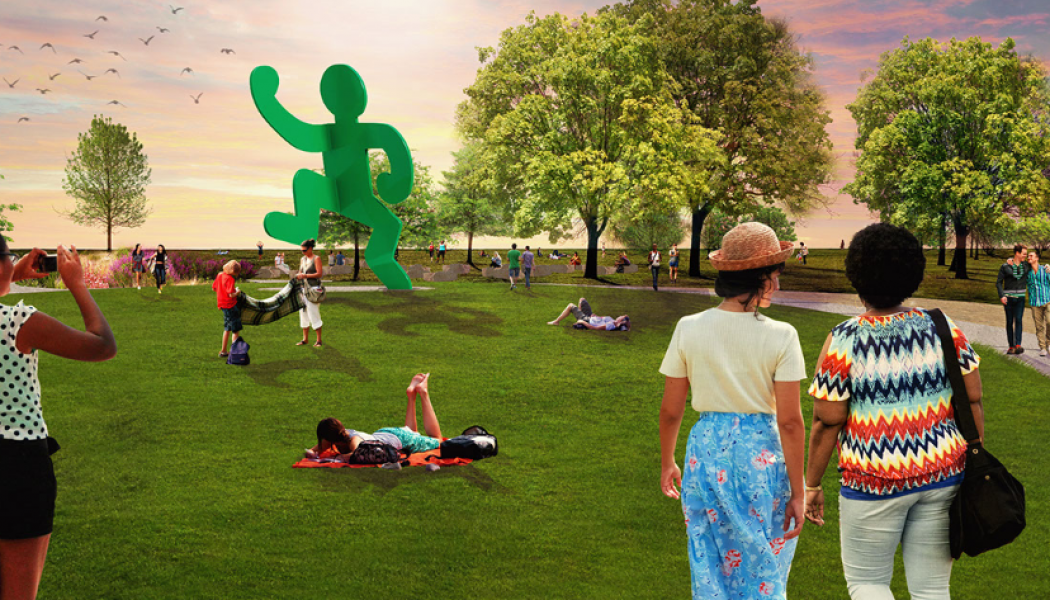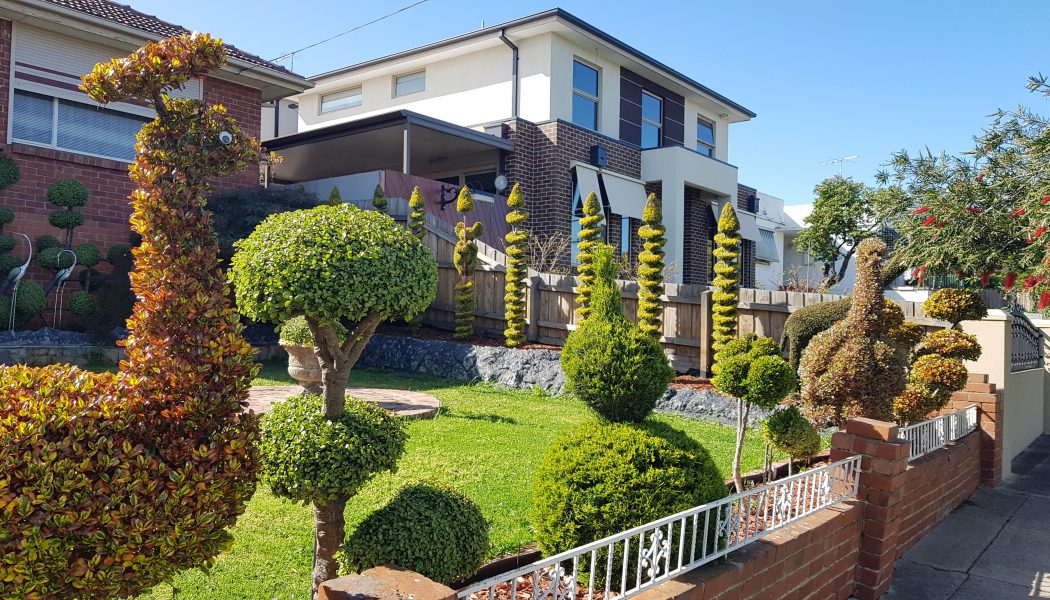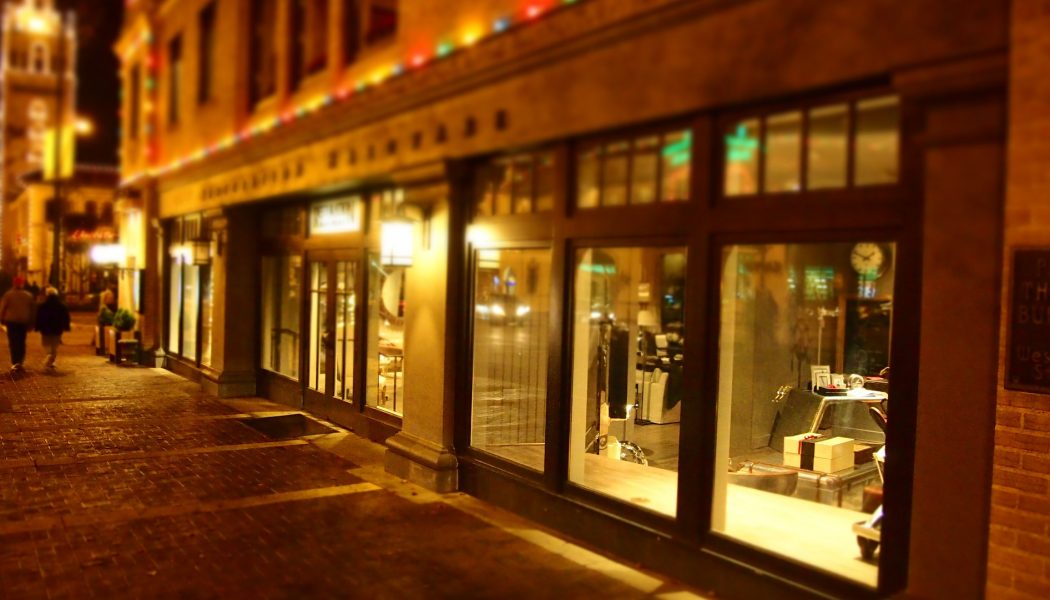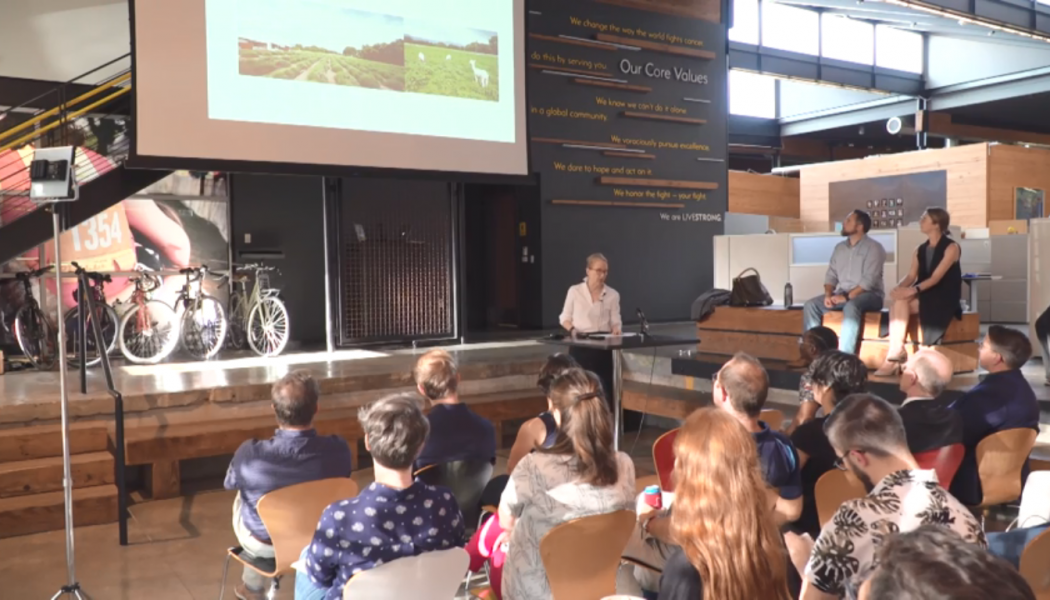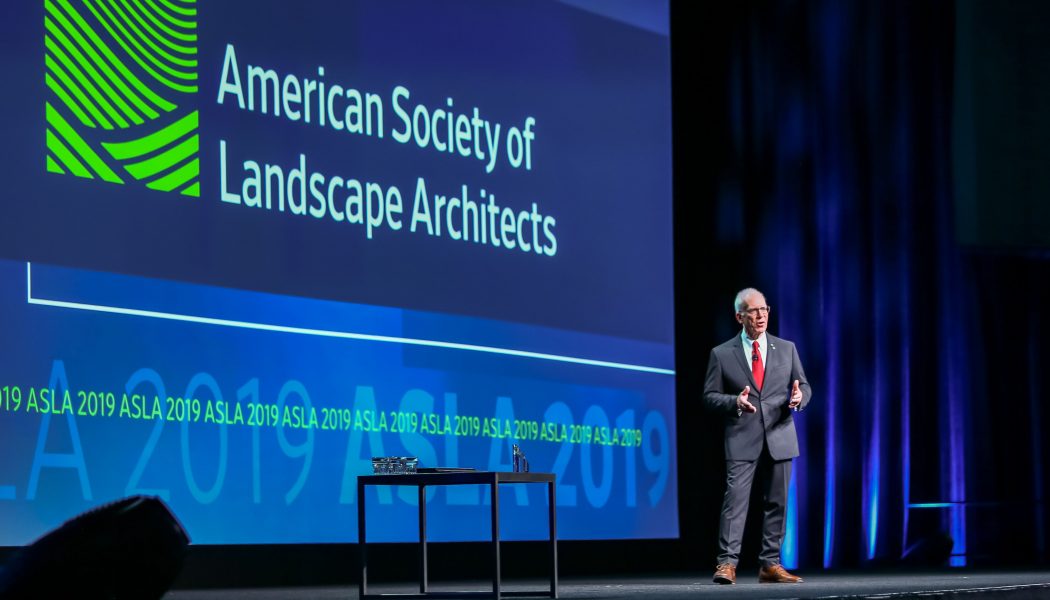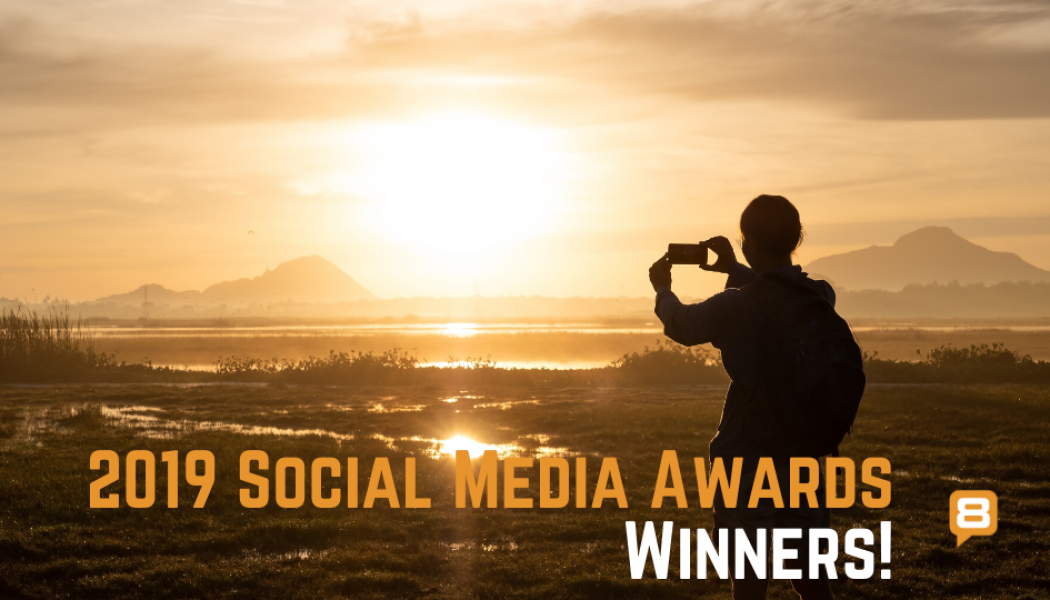Cover Story
Posts to be featured on the Home Page Slider
Land8 Virtual Conference 2020 [Webinars]
The Land8 Virtual Conference sponsored by Anova Furnishings was held on April 20 – 23, 2020. View recordings here: Kona Gray (EDSA) – “Design Thinking – Utilizing Hand Graphics to Explore Ideas” | View > Barbara Deutsch (Landscape Architecture Foundation) – “Landscape Performance to Demonstrate Impact” | View > John Surico (Journalist and Urban Planning Researcher) – “Revitalizing Urban Parks After COVID-19” | View > Gina Ford (Agency Landscape + Planning) – “Cutting Against the Bias – A Talk About the Strategic Advantage of Gender and Design” | View > Kurt Culbertson (Design Workshop) – “Spatial Equity in the Time of Covid 19” | View > Catherine Saunders (TBG Partners...Read More
COVID-19 Op-Ed by Ernest Wong
This week will be a month since we closed our office and sent everyone home to work remotely. It’s given me time to reflect on the impact of this pandemic on all of our lives. Recalling prior events such as 9/11 and the 2008 recession that impacted how we viewed the world, this Coronavirus event will certainly be life-altering in ways we can’t even imagine. As resilient as we are as a society and a human race, we also are susceptible to pandemics, natural disasters and even our own ignorance. This incredibly dangerous event has me thinking about our future. As one of the high-risk individuals of being a baby boomer with a history of respiratory problems including a recent bout with pneumonia, I also have a dog that must be walked daily. I’ve been trying my hardest to abide by the social di...Read More
Managing Risk [Video]
The work of landscape architects work involves complex decisions and responsibilities — detailing and designing projects, observing construction, achieving owner satisfaction, and ensuring the health, safety, and welfare of the public. Landscape architects are subject to professional liability as a direct result of the higher expectations placed on us due to our specialized education and training. When a project doesn’t go according to plan, owners can file lawsuits against the design firm. Risk are inherent in the landscape architecture profession, but we rarely talk about it. During the Land8x8 Lightning Talks in Austin, TX, Marissa McKinney, Principal at Austin-based landscape architecture firm Coleman & Associates, discussed the many ways in which design professionals expose ...Read More
Learning the Language of Contemporary Planting Design
Many landscape architects resist planting design. It’s complex, time-consuming, and site-specific. Results are highly intertwined with implementation and maintenance. Planting is also exactly what your dad’s friends think you do – “Come over, tell me what to do with my yard. And why don’t you mow the lawn while you’re at it.” However, over the past 20 years, it’s become increasingly apparent that landscape architects can’t continue to rely on landscape contractors to “shrub up” their beautifully-rendered designs. Functioning and maintainable plantings are essential for projects to deliver the ecosystem benefits that landscape architects claim to value. High-profile projects like the High Line in New York demonstrate the power of good planting to capture the public imagination and con...Read More
Creating Better Places [Video]
The research is clear: Spending time outdoors, especially in green, natural settings, is good for our health. A growing body of research is demonstrating the positive measurable effects spending time in nature has on our well-being – from reducing mental distress, increasing physical activity, and extending our life span. In fact, spending time outside is so vital that doctors around the world have begun prescribing time in nature as a way of improving their patients’ health. Unfortunately, natural settings are not readily accessible to everyone, and the quality of our outdoor environments are not always conducive to human well-being. Understanding that how we shape our environment impacts our health, Stephen Cook, Principal at the Planning and Landscape Architecture firm Hitchcock Design ...Read More
AIDS Garden Chicago: A Garden Design That Will Heal and Inspire the Chicago Community
AIDS Garden Chicago, designed by Design Workshop, is a realization of a design idea, close to Alderman Tom Tunny’s heart, for a garden championed by him and a number of community organizations. The garden surrounds a 30-foot-tall sculpture designed by the late artist and activist, Keith Haring and donated to the Chicago Park District through the efforts of Ald. Tunny and support from the Chicago Parks Foundation. The sculpture, a self-portrait of Keith, was installed in November 2019. The AIDS Garden Chicago will be Chicago’s first public space to memorialize the early days of Chicago’s HIV epidemic, and to honor those who continue to fight against the disease today. Anticipated to be completed in 2020, the 2.5-acre garden is located along the magnificent shoreline of Lake Michigan just so...Read More
10 Questions with @ShitGardens
Are you tired of oversaturated beach scenes, breathy clouds of flowers, and manicured contemporary plazas filling your Instagram feed? Head over to @shitgardens, the popular Instagram feed where Bede Brennan and James Hull present images of landscapes that won’t be winning any beautification awards. We had the opportunity to ask @shitgardens a series of questions about their work. These guys focus on landscapes that don’t make it into glossy design magazines or landscape architecture textbooks. Pay attention, you might learn something – and get some good laughs along the way. Make sure to give them a follow @shitgardens on Instagram – and buy their book, Shitgardens. What makes a @ShitGarden? How do you define it? There is a spectrum. For us, shit is often a term of endearment,...Read More
How to Avoid the Pitfalls of Gentrification
Gentrification is a term that emerged in the mid-1960s to explain the demographic and social changes that some neighborhoods in the London were experiencing. Since then, a vast number of articles and essays on urban transformation have sought to explain this phenomenon. In this article, we shall explore how to detect areas that are likely to be affected by this process, how to identify those that are already being affected and how to prevent this from happening to preserve heterogeneity, social inclusion, and sustainability in our cities. But what exactly is gentrification? The word gentrification coming from the English syllable “gentry”, refers to the British rural nobility. Gentrification was originally coined to describe the emergence of middle-to-higher-income social group...Read More
Flooding by Design
As volatile weather events increasingly become the norm, the importance of designing to support dynamic ecological processes – and proactive planning not just for operations and maintenance, but for the inevitable, ensuing recovery efforts – has never been more critical. A pioneering project in China’s Hunan Province, the Baxi Island River Forest exemplifies both the importance of designing in harmony with nature as well as the tremendous challenges associated with changing climates and rising water levels. The project was conceived as a catalyst to regional development and eco-tourism within the larger Dawang Mountain Development Zone. One of 16 islands along the Xiang River in Changsha, the 156-acre Baxi Island had for many years been a private island sandbar covered with poplar trees an...Read More
UT Austin [Video]
As the Graduate Program in Landscape Architecture celebrates the completion of its 15th year at the University of Texas at Austin, Director Hope Hasbrouck reflects on the radical change the program has experienced since its establishment. This transformation, Hasbrouck explains, is in response to the changing context of landscape architectural design. As perspectives within the profession shift to re-orient design goals from program to performance, research and academia topics have expanded to explore the dynamics of urban systems, historical and theoretical basis for design approach, and the complexities of multidisciplinary projects. During her presentation at the Land8x8 Lightning Talks in Austin, TX, Hasbrouck shared five words she is seeing in academia that she believes will guide the...Read More
ASLA 2019: A Celebration of Authenticity, A Reminder of Harmony
The ASLA Conference on Landscape Architecture often feels like homecoming. Running around with 6,000-some of your colleagues, friends old and new, it’s almost impossible not to feel more educated, inspired, excited, and empowered. This year we celebrated, discussed, and challenged landscape architecture – how we perceive it, shape it, and share it – in sunny San Diego in November. With over 120 education opportunities, 14 special events, and 350 exhibitors gathered in concert, there is always something to do, something to see, something to learn, and someone to meet. With a wide range of topics varying from sustainable materials, BIM (Building Information Modeling), extending to identity and culture in our practice, this year’s conference felt especially powerful, timely, and i...Read More



